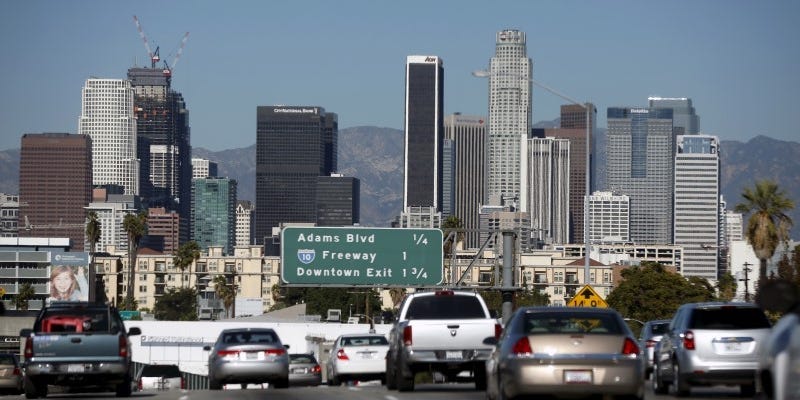Defaults on commercial real estate loans will likely rise from a potential credit crunch, says UBS Global Wealth Management. But stress on banks that service such loans appears to be manageable, the firm says. Data from Trepp shows the delinquency rate for loans in the office market climbed in March. Loading Something is loading.
Thanks for signing up!
Access your favorite topics in a personalized feed while you’re on the go.
Defaults on commercial real estate loans will likely rise from an ongoing credit crunch, but the stress on banks won’t be as severe as the upheaval during the global financial crisis, according to UBS.
After the failures of Silicon Valley Bank and Signature Bank last month, investors searching for signs of further stress in the banking system are seeing problems brewing in the commercial real estate market.
Rising interest rates, a slowdown in the world’s largest economy, and higher vacancy rates in office buildings have weighed on the commercial real estate market in the last couple of years.
“Now, an expected credit crunch on the back of rising cost of funding for banks may further compound its troubles,” Solita Marcelli, chief investment officer Americas, at UBS Global Wealth Management, wrote in a Wednesday note to clients. “However, in our view, while the risks in CRE have certainly increased, it does not pose a wider systemic risk.”
She sees default rates as likely to increase and access to capital becoming more restrictive, but says “CRE exposure at banks is currently manageable with potential loss levels even in a hard-landing scenario likely causing earnings pressure rather than capital depletion.”
Regional and local banks in recent years have been servicing more CRE loans, and are now overseeing 70% of such loans, said UBS. On the back of the SVB and Signature Bank failures, concerns are growing that regulations around small and mid-sized banks will tighten further and access to lending will be reduced.
Meanwhile, investors are also concerned about the impact of rapidly rising interest rates on outstanding debt. Roughly $5.4 trillion in CRE debt is outstanding, with $1.2 trillion set to mature this year and in 2024, said UBS, noting the figures exclude multifamily commercial real estate.
“While questions remain about refinancing at higher rates — it’s important to contextualize the size of the problem,” Marcelli said.
The office segment among commercial real estatement sectors only represents about 15% of the total value of commercial real estate, she said. Office exposure for banks represents less than 5% of total loans and 1.9% on average for large banks. Experts in the office segment of the market foresee structural stress progression taking shape over several years, UBS said.
While the CRE market is facing challenges, “we don’t believe a repeat of the 2008 liquidity crisis is likely — where capital markets essentially closed for financing,” said Marcelli.
Deliquencies
The delinquency rate on commercial mortgage-backed securities fell to 3.09% in March from 3.12% the month earlier, according to Trepp, a firm that tracks real-estate debt. But the delinquency rate for the office market climbed to 2.61% from 2.38%.
“The tone has gotten decidedly worse over the last three months as some big office loans (held by big property owners) have defaulted and/or been sent to special servicing,” Trepp said in its release.
Some high-profile office defaults including from office owners like Brookfield have cropped up.
“But it’s important to remember that even giant financial services companies have to face underperforming investments at times,” said Marcelli. “In these cases, the more financially prudent thing to do is either try to restructure the loan or hand the keys back to the lender.”
